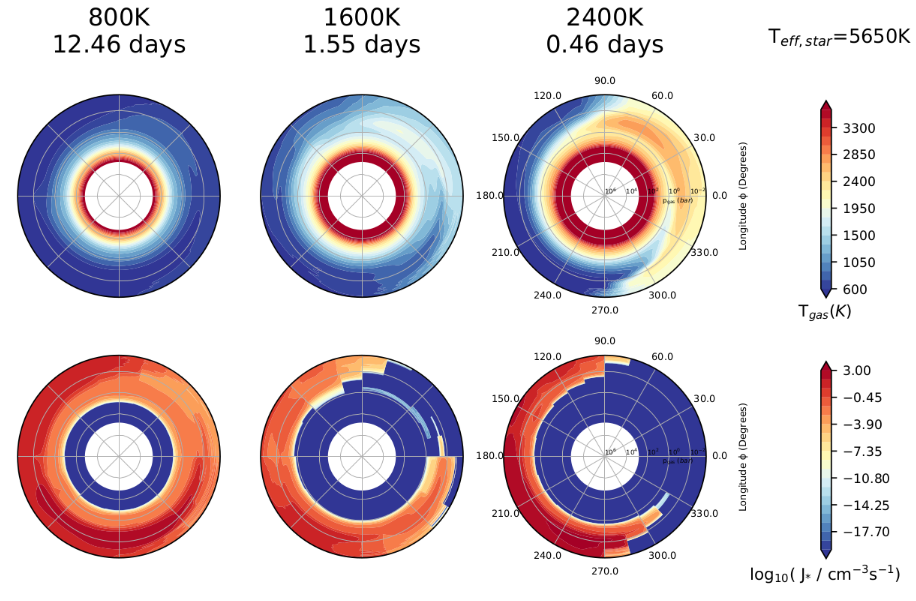David Lewis
Research
You can find my publication list here
Current research
Exciting things to come...
Previous research
My previous research has focused on the study of exoplanet and solar system planet atmospheres. In particular, I have worked to gain a better understand of the expected propties of the clouds which form in these diverse chemical environments. Below is a short summary of a key result from Helling, Samra, Lewis et al. (2023), and more of my work can be found in Helling, Lewis, Samra et al. (2021).
Global trends in micro-physical cloud properties
The population of currently known exoplanets covers a wide thermochemical regime. Cloud formation is expected to occur in the atmospheres of most gas-giant exoplanets. The composition and spatial distribution of these clouds depends on the local thermodynamic conditions in the atmosphere. In my previous work, I have studied how the micro-physical properties of clouds vary across the atmospheres of hot and ultra-hot Jupiter exoplanets.
Cool, Transition, and Hot Exoplanet Atmospheres
In Helling, Samra, Lewis et al. (2023), we applied a hierarchical modelling approach of post-processing the 1D kinetic cloud formation model DRIFT/StaticWeather (Woitke & Helling (2004), Helling & Woitke (2006)) on to a grid of cloud-free 3D General Circulation Models (GCMs) for hot Jupiters. This grid of GCMs (Baeyens et al. (2021)) spans a wide global parameter space of planetary equilibrium temperaure (Teq = 400 - 2600 K) and multiple stellar types (M, K, G, and F). We identify three classes of gas-giant atmospheres based on their cloud properties:
- Class (i): Cool atmospheres (Teq ≤ 1200 K)
- Homogeneous nucleation rate and global cloud coverage
- Class (ii): Transition atmospheres (Teq = 1400 − 1800 K)
- Patchy nucleation rate and partial cloud coverage
- Class (iii): Hot atmospheres (Teq ≥ 2000 K)
- Nightside localised nucleation and cloud coverage
